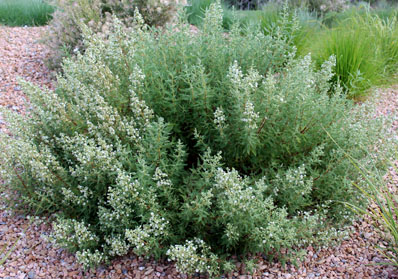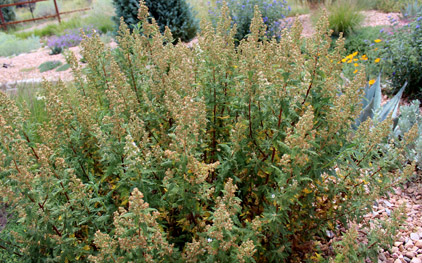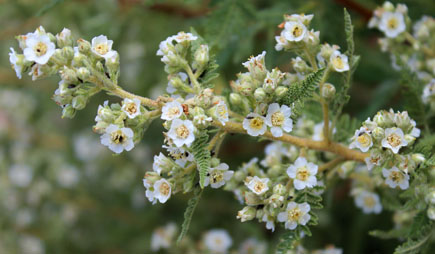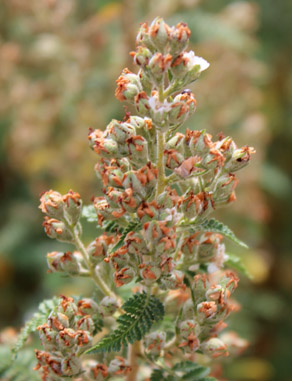The Plant
 |
 |
Plant w/ Flowers |
Plant w/ Seed Pods |
The Flowers

The Seed Pods

Description
"Chamaebatiaria is a monotypic genus of aromatic shrub in the rose family containing the single species Chamaebatiaria millefolium, which is known by the common names fern bush and desert sweet. Its genus name comes from its physical resemblance to the mountain miseries of genus Chamaebatia, which are not closely related.[1] This is a hairy, sticky plant covered in fernlike foliage made up of fronds of small leaflets. At the ends of the erect branches of this spreading bush are inflorescencesof white roselike flowers. This shrub is a resident of scrub, woodland, and forests in western North America. The closest relative of Spiraeanthus.[2]" (Wikipedia)
Field Guide:
"Common Name: fern bush, desert sweet Duration: Perennial Nativity: Native Lifeform: Shrub General: More-or-less evergreen shrub, 1-3 m (3-10 ft) tall; stems densely branched; twigs and herbage glandular, stellate- pubescent; aromatic. Leaves: Alternate, fern-like, oblong to lanceolate in outline, 2- 7 cm long, twice pinnate or with pinnatafid leaflets, pinnae in 8-24 pairs, the ultimate divisions about 1 mm long, sticky, glandular, stellate pubescent. Flowers: Inflorescence a panicle, 3-15 cm long, densely glandular; sepals 5, 3-5 mm long, green, persistent; petals 5, broadly ovate to somewhat round, 2.5-5 mm, white. Fruits: Follicle, 5-6.7 mm long; seeds few, 2-3 mm long. Ecology: Found on dry, rocky slopes, washes, plains, pi-on-juniper woodlands, ponderosa pine forests from 4,500-8,000 ft (1372-2438 m), flowers July-November. Distribution: Navajo, Coconino, Mohave, and Yavapai counties; western U.S. Notes: This species makes an attractive ornamental. It is a host plant for the spring azure butterfly. Ethnobotany: The Navajo smoke the leaves rolled in corn husks for good luck in hunting, and use the plant as feed for sheep and goats. Editor: Springer et al. 2011" (SEINET Arizona-New Mexico Chapter)
Internet Resources